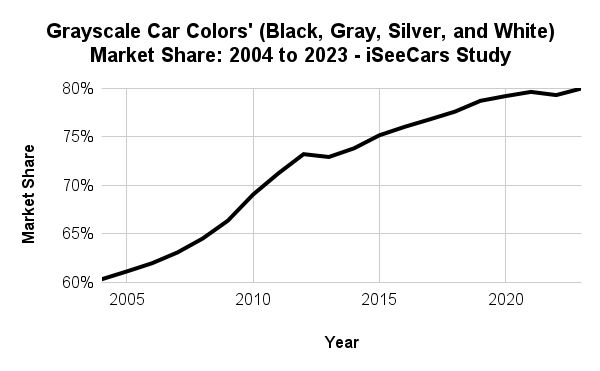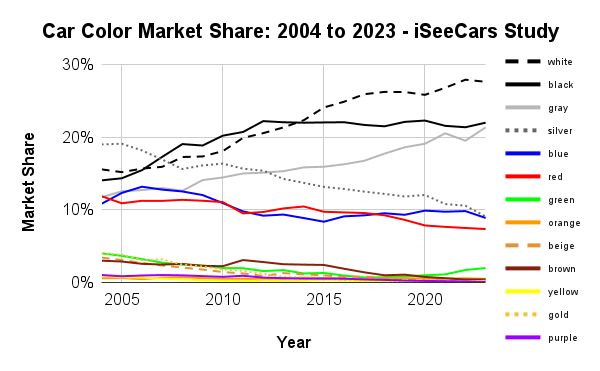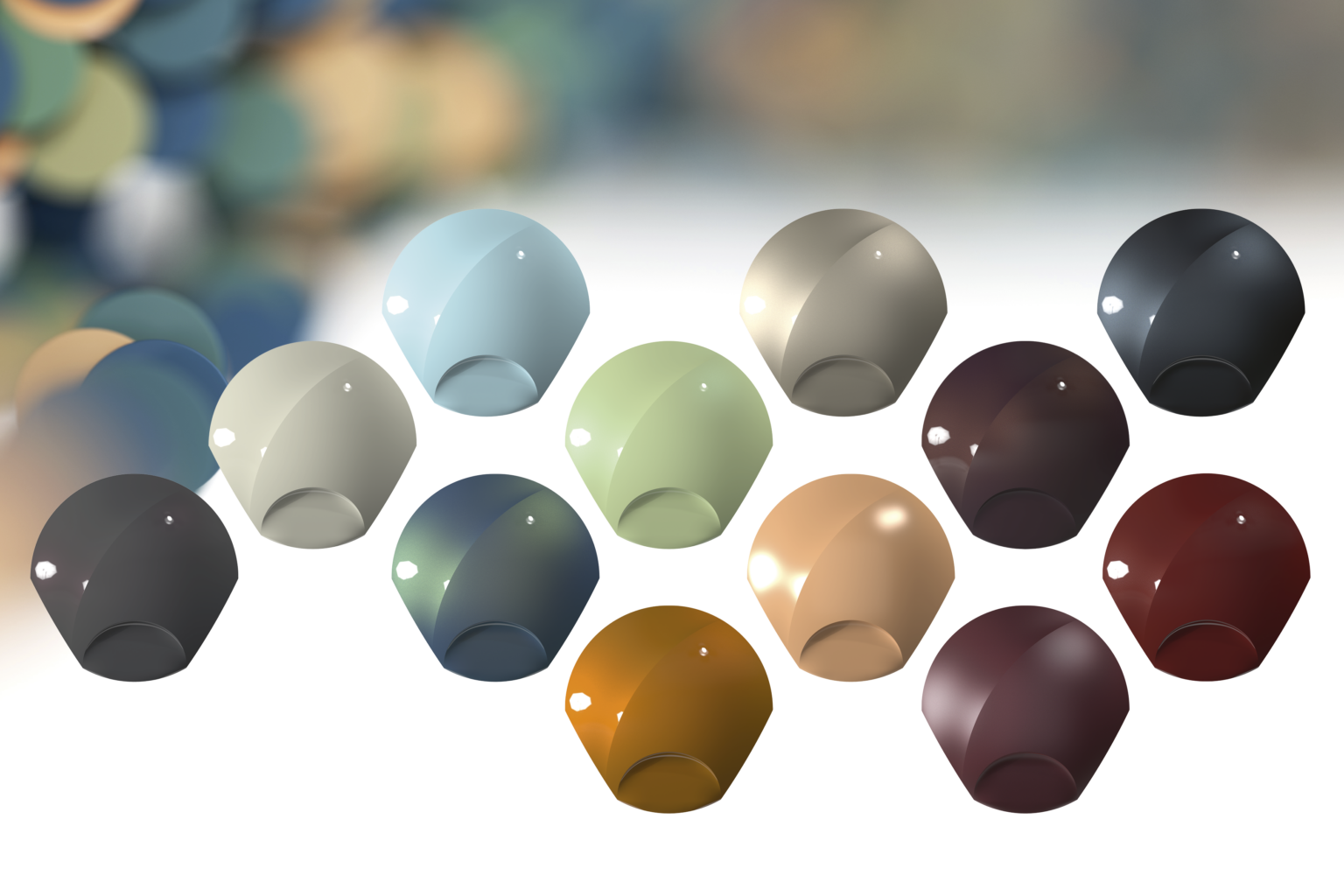
Grayscale colors continue to hold market majority of used car sales
By onMarket Trends
Grayscale colors — white, black, gray, and silver — made up 80% of used model year 2023 vehicles bought between January 2023 and April 2024 compared to 60.3% of model year 2004 vehicles purchased during the same time period, according to an iSeeCars study.
Gray made the biggest move up, gaining 81.9%. Silver lost the most ground dropping 52.2%.
The analysis was conducted on more than 20 million model year 2004-2023 vehicles.
“Colorful cars appear to be an endangered species,” said Karl Brauer, iSeeCars executive analyst. “Despite a diverse palette being offered by automakers, there are far fewer non-grayscale cars sold today. They’ve lost half their market share over the past 20 years, and they could become even rarer in another 20 years.”
The preference was consistent for nearly all of the two decades except for 2012 and 2013 when iSeeCars says there was a “slight pullback.” Within the past three years, the rise has plateaued leading the car sales site to believe the market may be approaching a saturation point for grayscale vehicles.
Nearly identical color offerings per model have been offered over the past 20 years, with 6.7 colors available for the average 2023 car versus 7.1 colors for the average model in 2004, according to iSeeCars.
White is the most dominant car color today, after passing black about 10 years ago and continuing to climb, according to the study.
Gold, purple, brown, and beige have each lost more than 80% of market share over in the last 20 years while more mainstream colors red and blue have stayed at around 10%. Green fell nearly as much as purple but has begun making a small comeback in the last few years as the only non-grayscale color to gain market share since 2020, iSeeCars said.
By vehicle type, white has remained the preference for trucks, growing in popularity since 2004 by 11.1%. The preference for SUVs is also white, shifting from silver in 2004. The same preference shift is also the case for passenger cars.
“Cars have lost appeal in the consumer market, but they continue to serve in rental car fleets and other commercial uses,” said Brauer. “This likely explains the more than doubling of share for white in the car segment, a color popular with fleet managers due to its relatively high durability and low maintenance costs.”
Gray is nearly as popular for sports cars as red was for the vehicle type in 2004, differing by only about 2%. Both colors held around 20% of the market share.
“The sports car segment managed to break the industry pattern, with grayscale colors only gaining 4.3% share since 2004,” said Brauer. “White more than tripled in this segment, and gray jumped by 81%, but those gains were mostly offset by silver falling 83% and black losing 2.1%. Red also lost ground with sports car buyers, while blue and orange made substantial gains.”
In October, BASF said the classic vehicle color wheel “has had its day,” and announced they were moving on to new colors that would be brought to market in the next three to five years.
The 2023-24 edition includes cooling colors in the Americas, with “non-human intelligence” a strong driver for the designers who created the colors.
Called the On Volude collection, the 2023-24 chosen colors are lighter, more expressive shades that adopt an increasing focus on sustainability and functionality, according to BASF.
Earlier this month, Repairer Driven News reported on a patent filed by Toyota that could allow customers to change the color of their vehicles with thermal energy technology.
If Toyota uses the technology, vehicles would be distributed to all dealerships in base colors and the color changed by energy devices, such as large heaters, located inside a bay, garage, or tunnel. Walls or mirrors could be used to reflect the light, the patent says.
Images
Featured image: A used car lot in 2019. (Credit: Apriori1/iStock)
Graphs provided by iSeeCars
BASF On Volude collection as part of the company’s 2023-24 Automotive Color Trends. (Provided by BASF)



